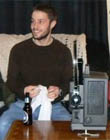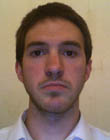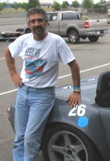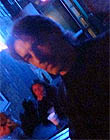|
|
This topic comprises 3 pages: 1 2 3
|
|
Author
|
Topic: Proper Lamp Alignment/Bulb Focus Procedure
|
|
|
|
|
|
|
|
|
|
|
Monte L Fullmer
Film God

Posts: 8367
From: Nampa, Idaho, USA
Registered: Nov 2004
|
 posted 07-09-2009 04:50 AM
posted 07-09-2009 04:50 AM




quote: Tom Wienholt
However, I was referring to the method used where no lenses are in the projector during focus/alignment. What is the procedure for this method?
We call that doing the "Looney Tunes" alignment - due to the fact of the rings that shows up on the screen when we get the bulb in focus - which is called the "coarse focus":
With lens and aperture out of the projector, you start the projector motor,strike the bulb and open dowser.
You'll notice the dark spot in the middle of the screen which is the bulb itself.
First you do focus which the dark spot will decrease in size along with creating the "looney tunes" ring around this dark spot. You don't want to decrease this spot too much, but back it up where the rings really show.
Then, on the dark spot, you might see "blisters" around this dark spot. This is the cathode part of the bulb coming from behind.
the goal is to hide the "blisters" which means that the bulb is square with the center of the projector.
To rid of the "blisters" is to do the lateral and vertical bulb alignments.
When you're done with this "coarse" focus, leave bulb and motor on and close dowser.
Then throw in the "scope" aperture plate and "scope" lens. Then, open dowser and you should have an even field of light over the entire screen.
If you got dark edges or a "hot spot" in the center of the screen, adjust bulb focus until the edges brighten up, or the "hot spot" is gone.. This is called "fine focus".
..BUT, be quick at this for the naked light through a lens will cook and could destroy the lens in seconds. And if using a large wattage of bulb, do this step in 15 second intervals, with having dowser closed good minute between the 15 second intervals so the lens can cool down
Good luck-Monte
| IP: Logged
|
|
|
|
|
|
|
|
|
|
|
|
|
|
|
|
|
|
|
|
|
|
All times are Central (GMT -6:00)
|
This topic comprises 3 pages: 1 2 3
|
Powered by Infopop Corporation
UBB.classicTM
6.3.1.2
The Film-Tech Forums are designed for various members related to the cinema industry to express their opinions, viewpoints and testimonials on various products, services and events based upon speculation, personal knowledge and factual information through use, therefore all views represented here allow no liability upon the publishers of this web site and the owners of said views assume no liability for any ill will resulting from these postings. The posts made here are for educational as well as entertainment purposes and as such anyone viewing this portion of the website must accept these views as statements of the author of that opinion
and agrees to release the authors from any and all liability.
|

 Home
Home
 Products
Products
 Store
Store
 Forum
Forum
 Warehouse
Warehouse
 Contact Us
Contact Us




 Printer-friendly view of this topic
Printer-friendly view of this topic












![[Frown]](frown.gif) .
.





